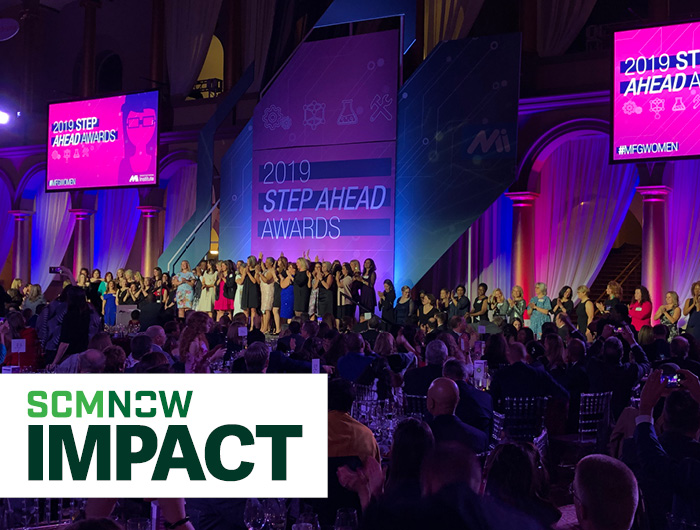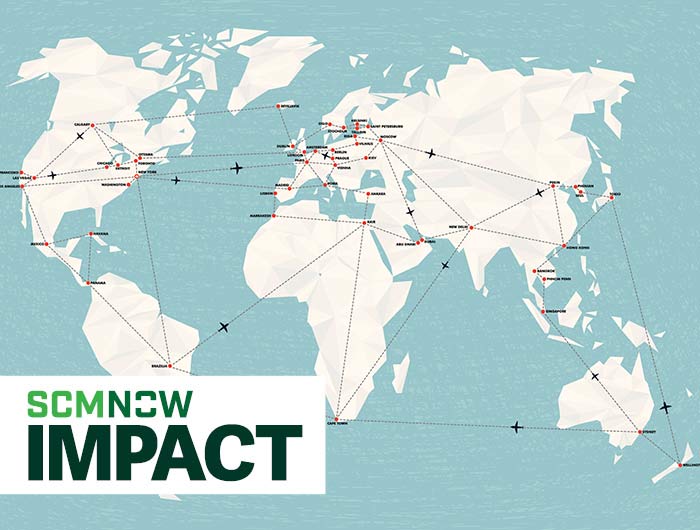Too often, companies view their supply chains as a loose collection of manufacturing sites, warehouses and distribution centers to be managed as separate entities. Professionals fail to realize the full extent of the interconnectedness and interdependence, nor the benefits of a system-wide view. While this behavior usually is intended to enable growth in the short term, it hinders the identification of opportunities for broad system optimization and can negatively affect profitability in the long term.
Consequently, it is valuable to periodically take a step back and look at the entire supply chain to confirm that it is an integrated system that really makes sense. Questions to be answered include the following:
- Are we manufacturing products in the best locations, aligned with emerging global markets?
- Are we taking advantage of economies of scale or economies of flexibility in manufacturing?
- Is our network flexible enough to take advantage of frequent market shifts?
- Would a different network design cut lead times to our customers and make us more responsive? Would those shorter lead times reduce inventory requirements — both pipeline inventory and inventory at the receiving end?
- Do we have a global inventory strategy, and does it cause required inventories to be at the most appropriate locations?
- Does our strategy employ mathematical analysis of replenishment frequencies and lead times to set cycle stock, as well as analysis of all variabilities to set safety stock?
- Have alternate replenishment strategies been evaluated, such as occasional expedited shipping, to reduce risk and the need for high safety stock levels?
- Are we taking advantage of postponement and finish-to-order strategies where possible?
Value stream mapping is a proven practice at the manufacturing level and can render an equal or greater value at the supply chain level by providing a practical, graphical and data-driven picture to frame analysis of these factors.
This approach offers three key advantages: First, it provides a pictorial view of the end-to-end supply chain with key flow data and control signals, offering insights that are hidden by traditional supply chain views. Second, multifunctional discussions that naturally occur while building the map create a broad, detailed understanding of supply chain performance. And third, opportunities are framed in a system-wide context, which encourages comprehensive optimization.
To deliver the full improvement potential, the value stream map must follow a well-developed plan, with appropriate preparation and follow up.
THE METHODOLOGY IN ACTION
W.L. Gore & Associates is a global materials science company dedicated to transforming industries, improving lives and solving complex technical challenges in the most demanding environments — outer space, the world’s highest peaks and the inner workings of the human body. Gore’s diverse products, such as GORE-TEX fabric, use advanced materials to generate meaningful impact for end users and consumers. Gore employs 9,500 associates and has manufacturing facilities in the United States, Germany, United Kingdom, Japan and China, and sales offices around the world.
While recent supply chain initiatives had led to some degree of supply chain optimization improvement, Gore supply chain leaders knew that additional benefits could be achieved with a more structured approach. They chose to apply high-level value stream mapping to the entire supply chain. So far, the process has been piloted on four supply chains representing the variety of Gore’s businesses, leading to increasing value as the process continues to advance.
One of the supply chains involved in the pilot manufactures and delivers assembled products. The supply chain starts with machined components purchased from suppliers in Europe and North America. Subassemblies are made from these components in plants in the United States and Europe. Various subassemblies then are shipped to and from plants in the United States, Europe and China for final assembly. Finally, they are distributed to the world-wide customer base. Figure 1 shows a simplified portion of the map.

One insight gained from this map was that flow could be significantly improved. For instance, final assemblies made on any one of the three continents could be shipped to any other continent, creating several crisscrossing paths. This had been known prior to the mapping, but neither the full extent nor the volumes involved were fully appreciated. As a result, the team decided to make final assemblies in each customer’s specific region, which saved considerable transportation costs and shortened delivery lead times.
The map also revealed that machined components were purchased from several suppliers in the United States and several more in Europe. Some components needed in the United States were purchased in Europe and then shipped to the U.S. plant. The reverse situation applied as well. The team therefore chose to purchase all components from a single supplier and have them shipped directly to the point of use, offering both increased volume discounts and reduced shipping costs. A related improvement was to have component suppliers prepare subassemblies from their components, further simplifying the supply chain.
Continued mapping of other Gore supply chains revealed the following initiatives:
- Develop a global inventory strategy for each supply chain (versus locally developed independent targets) to put inventories in the most appropriate locations and significantly reduce or eliminate duplicate or redundant inventory.
- Share quality data between a plant producing a major intermediate and the plant using it to make the final product to avoid duplicate testing and shorten lead times.
- Consolidate production equipment from two operations in Asia to a single plant to cut lead time by three weeks and free up floor space for future expansions.
The combined financial benefit from the first four initiatives will approach $5 million annually when fully realized. At Gore, the creation and analysis of the map and development of improvement possibilities occurs in a multifunctional, team-based workshop spanning several days. The scope indicates who should participate, but it generally includes all functions influencing supply chain performance — business leadership, planning and scheduling, logistics, manufacturing operations, procurement, quality, and sometimes human resources and maintenance.
The first pilots were scheduled as five-day events. With lessons learned and more thorough preparation, this has been shortened to four days. As Figure 2 shows, preparation is critical. There must be a clear scope and well-understood need for improving the particular supply chain.

A preliminary supply chain map is developed prior to the workshop, with most of the focus on material flow, how much detail is needed to understand performance and detractors, and how to best arrange the important nodes on the map to clarify flow. Although very important for the workshop, less time is spent on information flow.
The preliminary map is created in an electronic application, then printed as a wall-sized copy to use during the workshop. The electronic map is updated at the end of each day, and a new copy is printed prior to the start of the next session.
Gore team members discovered that it is imperative to identify the data that will be needed to understand supply chain performance. Value stream maps tend to have standard data box layouts, but they may need to be modified to focus on data that is relevant to the scope of the supply chain being studied. Developing a data collection plan with a core group of supply chain associates, with planned periodic check-ins, helps the team stay on track and provide the best information available. Extreme data accuracy is not required; rather, the goal is data that is directionally correct.
Gore associates also understand the importance of agreeing on objective criteria for ranking both benefits and feasibility of the opportunities found prior to the workshop itself. This makes it much more likely that there will be a fair comparison of all opportunities and that personal bias for pet projects won’t cause poor decisions. Depending on the kind of opportunities identified, the team sometimes needs additional training to better understand how to resolve difficulties and determine the best approaches.
Post-workshop activities are critical to achieving the benefits discovered, so they are addressed during the workshop. In addition to the specific project charters, follow-up review meetings are scheduled to ensure that all projects are on track and to provide help if any are not. Ongoing reviews with business leaders ensure that resources aren’t being diverted to other tasks and help overcome any newfound barriers.
CONTINUING AND SUSTAINING
Gore leaders view this optimization process as a continuous cycle. They believe that periodically reviewing progress on current initiatives, updating the map to include successes and seeking new opportunities based on evolving business priorities are the best ways to sustain and grow supply chain performance. This continuous cycle also validates value for the optimization process, maintains momentum for ongoing initiatives and enhances further learning about the behavior and nuances of each supply chain.
SIDEBAR: CRITICAL SUCCESS FACTORS
The following can make or break a value stream mapping workshop:
- Leaders must provide clear direction on business priorities. If SCOR metrics have been developed, they can provide excellent guidance.
- Engage key participants, including business leaders. These professionals provide significant benefits to the full extent they participate; their participation at kickoff and final priority selection should be a minimum requirement.
- Select the workshop week far enough in advance that participants who will be travelling have time to make reasonable arrangements.
- Create a preliminary — 70-80 percent complete — supply chain map. This enables people to get to work quickly and shortens the setup time required.
- Insist upon an open, respectful, engaging environment where everyone feels they are being heard.
- Be realistic about resources. Prioritize, focus on finishing the top few, then move on to the next cycle.
- Commit to moving forward with chartered opportunities and ensuring the necessary resources are available.
- Instill a rigorous follow-up process.



